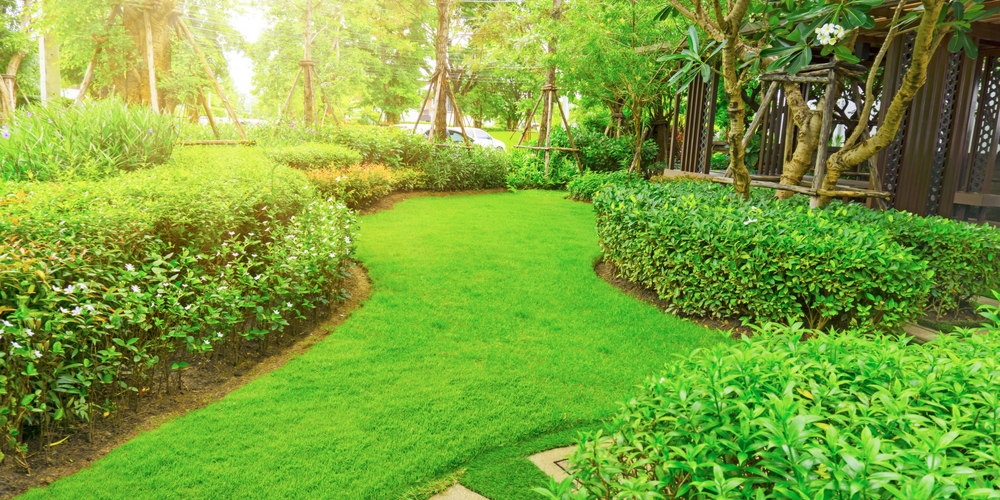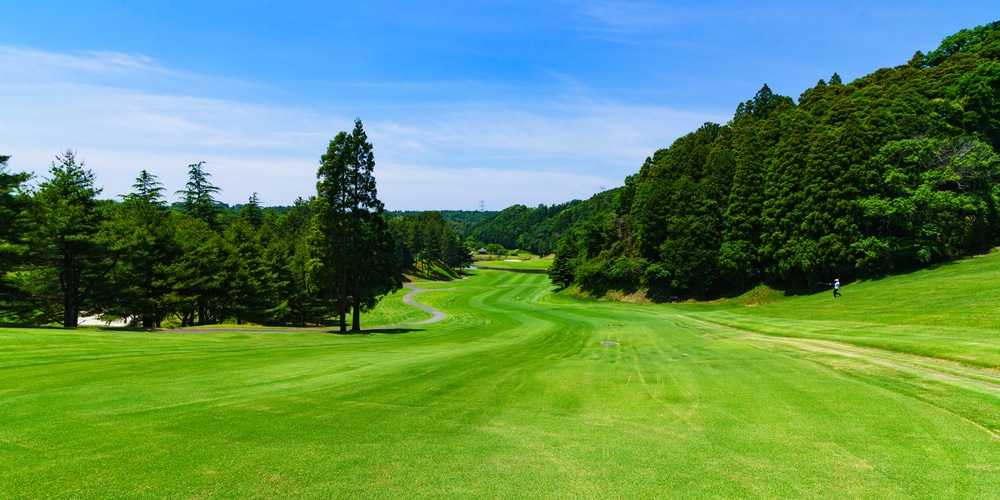Having a turfgrass that is drought resistant, heat tolerant, and able to crowd out weeds is a dream come true for many homeowners. The 4th millennium tall fescue is a variety of turfgrass that has been bred to have these qualities.
It is a versatile grass that can be used in many different types of landscapes. A hybrid of several tall fescues, this modified variety has been providing homeowners years of low-maintenance lawns. Let’s look at how to grow 4th millennium tall fescue.
What is 4th Millennium Tall Fescue?
Fescues are known for their ability to thrive in shady and dry conditions. You’ll commonly see them planted as an erosion-control measure on hillsides. They’re also a popular grass for home lawns because of their drought tolerance and wear resistance. Parks, too, will often use tall fescues for their durability in high-traffic areas.
The 4th Millenium Tall Fescue is a new and modified variety of this grass that has been specifically bred to be more resistant to diseases like brown patches. Because it’s turf-type tall fescue, it also has a finer leaf blade than the traditional types of this grass.
This variety was developed by breeding together several tall fescues, including the Kentucky 31, to create a hybrid that would be more tolerant to heat and drought. This is a good choice for those located in the southern part of the United States where the summers are long and hot.
Additionally, this is also considered as self-repairing turfgrass. This means that it can quickly recover from any damage no matter how extensive it is. It can quickly fill in any bare spots that are left behind.
What is it Used For?
This modified hybrid grass can be used for a variety of purposes, including:
- Lawns
- Golf courses
- Parks
- Commercial landscapes
- Residential landscapes
Their versatile nature makes them a popular choice for many different types of projects. The dark green color and fine leaf texture of 4th Millenium Tall Fescue make it an attractive option for lawns and other places where a well-manicured appearance is desired.
You can use it as a standalone grass or in a mix with other grasses. Most often, it is used in a blend of Kentucky bluegrass and perennial ryegrass. The tall fescue provides a nice contrast to the other grasses in the mix and helps to crowd out weeds.
4th Millenium Tall Fescue: Preferred Conditions
4th Millenium Tall Fescue is a cool-season grass that thrives in the spring and fall. It is hardy in USDA zones 3-8. When it comes to sunlight requirements, it prefers full sun, but it can still perform well under shade. Additionally, it likes well-draining soils that are rich in organic matter with a pH range of 6.5-6.7. You may fix the acidity or alkalinity of the soil by adding sulfur or lime.
Maintenance Tips
Although this turfgrass can get by with minimal care, it will look its best when given the right amount of attention. Here are some tips to help you keep your 4th Millenium Tall Fescue lawn looking great:
Mow at the Recommended Height
Ideally, maintaining your tall fescue at around 2.5 to 3.5 inches will help it to look its best. Mowing too short can scalp the grass and make it more susceptible to disease. Remember that a sharp mower blade is always ideal to avoid damaging the grass blades.
Water Deeply and Infrequently
This grass has deeper roots than most, so you don’t have to water it often. Remember to water it long enough that the water penetrates at least 6 inches into the soil. This will encourage the roots to grow deep, making the grass more drought tolerant.
Fertilize in the Spring
Applying fertilizer to your tall fescue spring in the fall will help it to stay green and lush throughout the winter months. One that is high in nitrogen and low in phosphorus. Apply it at a rate of 1 pound per 1,000 square feet.
Overseed in the Fall
If you have bare spots (although this is unlikely to happen often), you can overseed in the fall to help fill them in. Additionally, overseeding is also a good way to thicken up your lawn if it’s looking a little thin.
Remove Thatch Buildup to Improve Air and Water Circulation
Thatch is the layer of dead and living grass that can build up on your lawn over time. If it gets too thick, it can block air and water from getting to the roots of the grass. You can remove thatch by dethatching or power raking your lawn in the fall.
Final Thoughts
A self-repairing, all-purpose turfgrass, 4th Millenium Tall Fescue is a great choice for lawns, golf courses, parks, and other landscaping projects. Although tough and resilient, caring for it is pretty easy. Just remember to follow the tips mentioned above, and your 4th Millenium Tall Fescue lawn will be the envy of the neighborhood!


